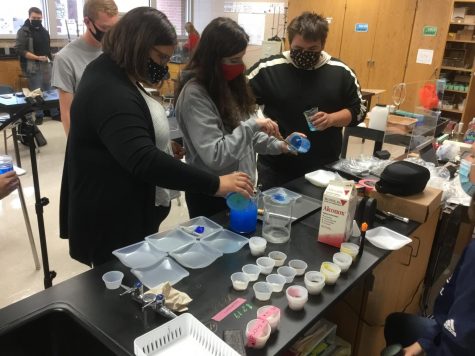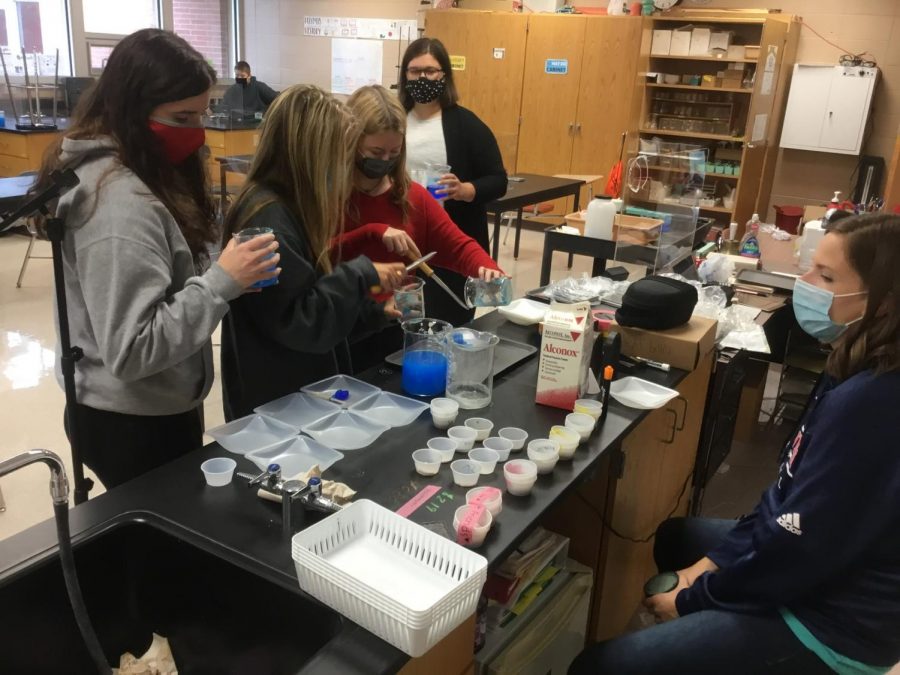Project of the Week: Material Science Class Creates Crystals
September 17, 2020
In a recent lab, Platteview’s Material Science class made crystals from copper sulfate. The students melted the blue copper sulfate in large beakers filled with water, trying to keep their solution supersaturated in order to grow their crystals. With little direction from teacher Mrs. Ortiz, students were left to concoct their own ratios of the solution.

Alexander Glynn (10) and Rafe Davenport (12) wait for classmates Ella Falk (11) and Alexis Reynolds (11) to finish emptying their beakers. After trying to evaporate as much of the water out of the solution as possible, they pour the leftovers into a larger beaker.
“Normal labs [tell you to] follow a “recipe,” and that’s not science!” said Mrs. Ortiz. “Real science involves testing out an idea, and includes multiple attempts, failures, and the altering of procedures to see if you can discover something or figure out how something works.”
On day one of the lab, students made their first solution, and poured a small amount into a petri dish. By next class, small rhombus-shaped crystals dotted the dish. The best became “seed crystals,” or the crystals chosen to grow many times their original size. The seed crystals were then tied to a string and lowered into a beaker of the solution.
Aided by the extended class periods, students had plenty of time for the next steps over the following three days. Each day, students meticulously cleaned their main crystals of deformities or let it be, excited to see more exotic shapes produced. They reheated their solution and replaced the copper sulfate consumed by the growing crystal. Finally, they took pictures of their crystals and recorded the mass.
Left to their own devices, students’ crystals varied widely from one another. Some solutions had too little copper sulfate, and their crystals shrunk. Others found more success: “It was hard to do without precise instruction,” said Dallas Bell (10), “but I was happy with the final product.”

The final crystals are displayed in trays as students vote which was their favorite. Ella Falk’s (11) crystal is in the middle left tray, and was one of the largest crystals made.
While the goal of the lab was to produce the biggest, most rhomboid crystal, most appeared very different. Junior Ella Falk didn’t care that her crystal started from the objective: “I like that mine turned into a big disco ball.”
Though labs – and school in general – have become much more challenging, students and teachers still find ways to have fun and learn.
